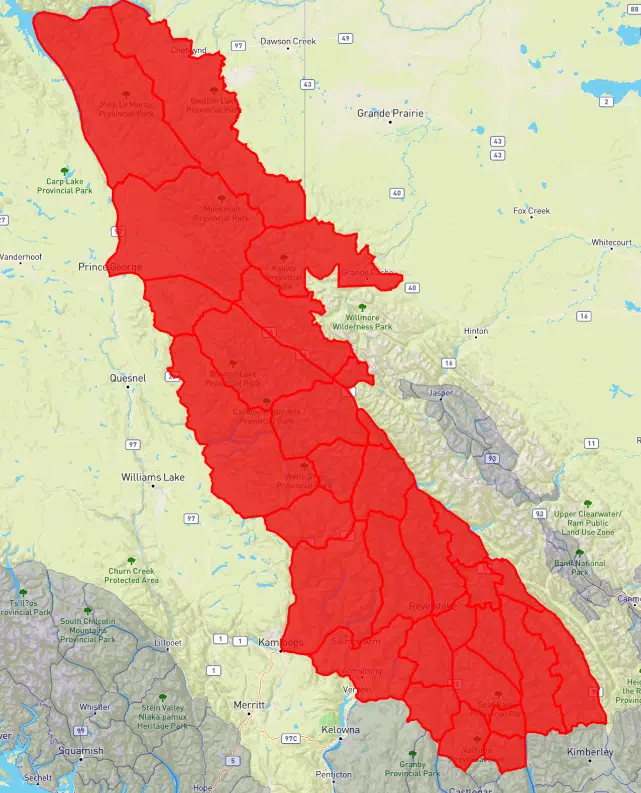Special Public Avalanche Warning issued for BC’s Interior

Avalanche Canada has issued a Special Public Avalanche Warning throughout the backcountry in BC’s interior, including mountain ranges within the East Kootenay.
The national avalanche forecaster says heavy snowfall, wind and warm temperatures have added to a weak snowpack where buried weak layers are prime for triggering.
They say the snowpack is currently in a precarious state, and recent storm cycles have brought conditions to a tipping point where dangerous avalanches are likely.
Forecasters expect the avalanche risk to remain high or considerable for the next few days, the Special Public Avalanche Warning will remain active through January 2.
You can find the latest forecasts on the Avalanche Canada here, find a statement from Avalanche Canada on the Special Public Avalanche Warning below:
Avalanche Canada, in partnership with Parks Canada, is issuing a Special Public Avalanche Warning (SPAW) for recreational backcountry users in the BC Interior. This special warning is in effect immediately and will apply through the end of Monday, January 2.
The SPAW region includes most of BC’s Columbia Mountains, Glacier and Mount Revelstoke National Parks, as well as the Northern Rockies. The SPAW extends from the southern boundaries of the Purcell Wilderness Conservancy and Kokanee and Valhalla Provincial Parks to Williston Lake north of Pine Pass and Mackenzie. For a map of the SPAW region, click here.
A prolonged cold and dry start to the winter created a number of persistent weak layers in the snowpack across the interior ranges of BC. The recent storm and warming temperatures have now destabilized that weak snowpack, making large, human-triggered avalanches likely.
“The snowpack is currently in a precarious state,” explains Simon Horton, senior forecaster for Avalanche Canada. “The storm cycles that hit western Canada over the past weekend added significant snow on top of an exceptionally weak lower snowpack. This has brought the conditions to a tipping point where dangerous avalanches are likely.”
“While avalanche danger ratings may start to decrease as the weather improves, there will still be a chance of triggering a large avalanche,” adds Horton.
Making conservative terrain choices can help manage this risk. Sticking to lower angle slopes and choosing smaller objectives that minimize the consequences of an avalanche are examples of how to reduce the risk.
Backcountry users should always check the avalanche forecast at www.avalanche.ca. Everyone in a backcountry party needs the essential rescue gear—transceiver, probe, and shovel—and the training to use it.
– Includes statement, image and files from Avalanche Canada

